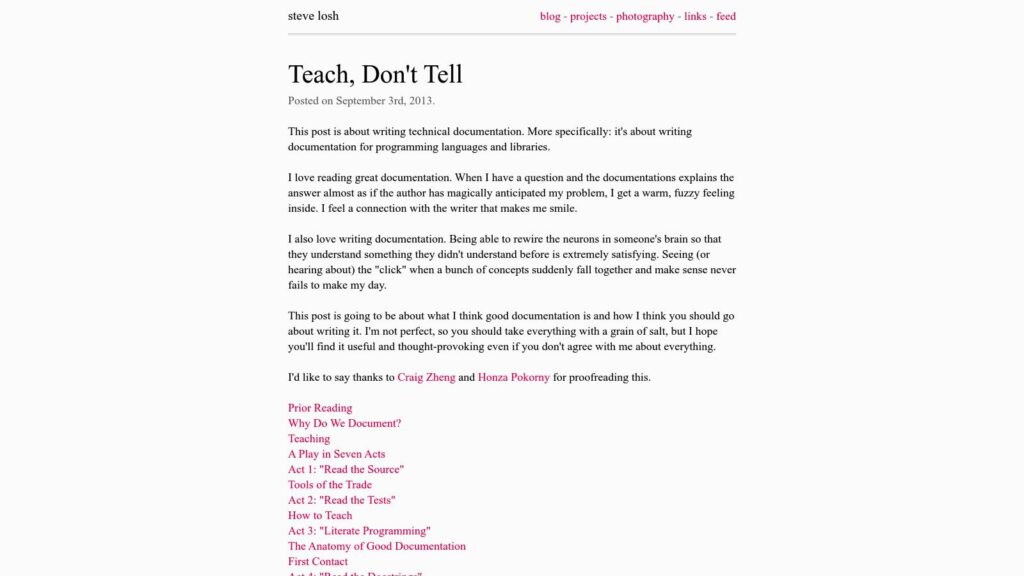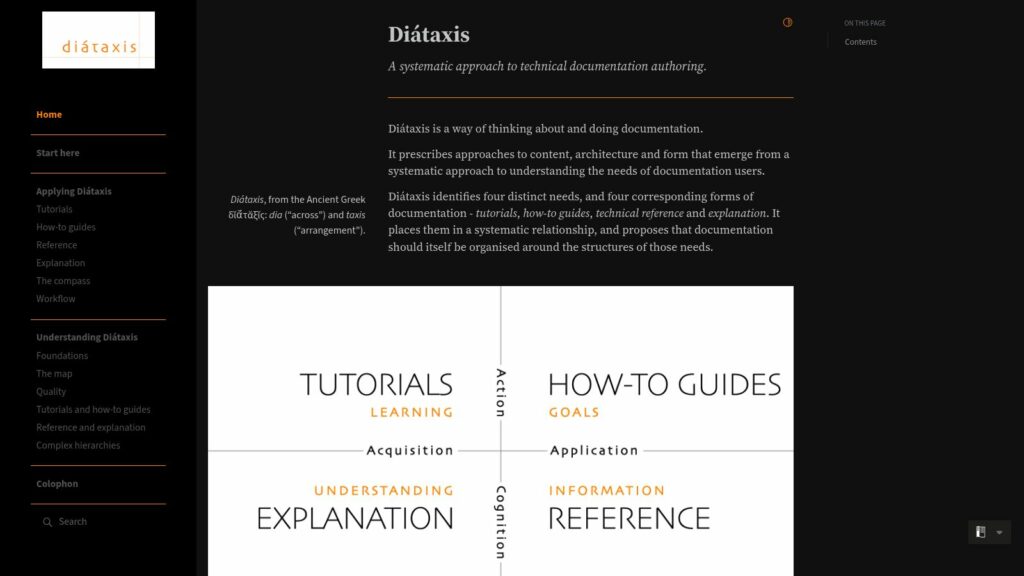Teach, Don’t Tell / Steve Losh
TLDR: Steve Losh's blog post emphasizes the importance of teaching in writing technical documentation for programming languages and libraries instead of merely stating facts. Good documentation should transform novices into experts by guiding users through a structured learning process. It should include clear, organized sections like First Contact, The Black Triangle, The Hairball, and Reference, avoiding ineffective methods like directing users to source code, tests, or wikis. The focus is on making documentation accessible and engaging for users.



